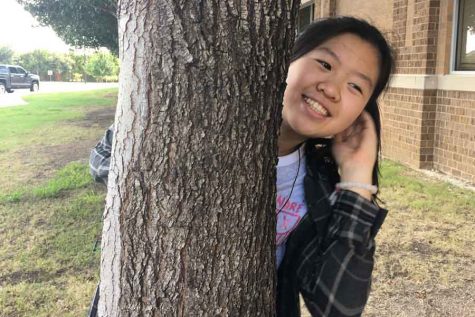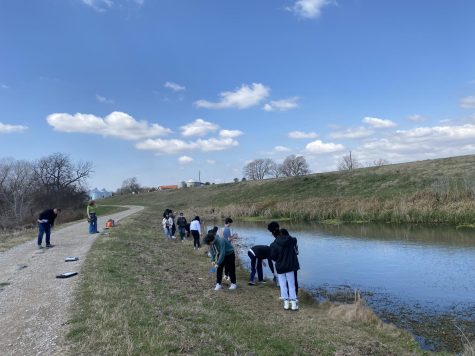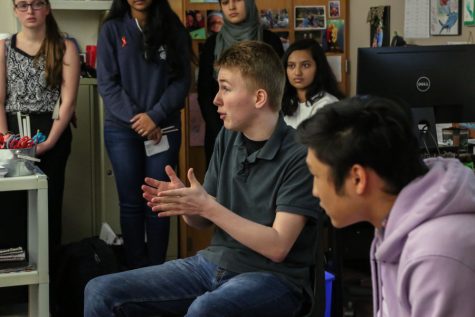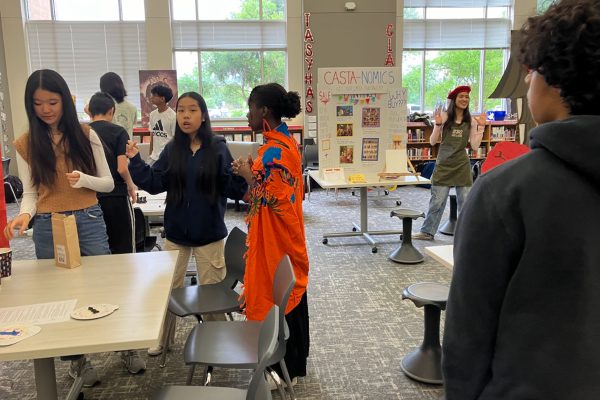The right to report
A look at the role of high school journalism
Wingspan was launched in August 2015, and since then has published more than 3000 stories to be read by the student body and the surrounding community. Hoping to help Wingspan and other high school journalism outlets is the New Voices campaign, a drive to help states pass legislation that would guarantee press freedom for student journalists beyond the 1988 Supreme Court decision in Hazelwood v. Kuhlmeier which established potential limits on the First Amendment rights of high school journalists.
I think you do it logically but we need people to challenge authority and I think that can start at a high school level, without question.
— Dale Hansen, WFAA sports anchor
A variety of journalism and media classes are offered on campus, and students in the advanced courses contribute to the online publication.
“Student journalism has numerous benefits for a school campus,” principal Ashley Rainwater said. “For one, it allows students to receive information regarding upcoming events and issues on campus. The journalism department has worked closely with teachers and staff to present information on campus related issues such as parking, dress code, college fairs, and changes in policy. Students live in a digital age where they receive much of their information from peers and online.The student journalism allows us to connect with students in an effective way.”
However, the impact goes beyond being just a communication medium.
“Another benefit to our journalism program is that is brings the current events from the world onto our campus,” Rainwater said. “Recent stories on a student that left Syria due to the civil war, students displaced due to natural disasters and a teacher whose family member was involved in a terroristic attack in New York allows students to view world issues through their unique perspective.”
Dale Hansen, the weeknight sports anchor for WFAA, believes that student journalism ties directly into school involvement.
“There is no platform that’s too small,” Hansen said. “We didn’t have a school paper, but I got involved in everything but now, I think the clubs, the organizations, the pep squads, whatever it is, bring your voice. Don’t be afraid to use your voice. If you have a school paper, that’s where I would start. Start writing pieces for the school paper.”
Hansen encourages young student reporters to learn about their craft early.
“Every one of you is so far ahead of me, I think this is an unbelievable opportunity you have. You learn the very basics and you’ll evolve, and you’ll learn, and you’ll meet other people and you’ll go to more seminars, you’ll get into college. But it all runs through this big filter and the more involved you can be, the more you can learn at the earliest possible age, the better you’ll be.”
Recent stories on a student that left Syria due to the civil war, students displaced due to natural disasters and a teacher whose family member was involved in a terroristic attack in New York allows students to view world issues through their unique perspective.
— Ashley Rainwater, principal
Hansen also believes in accountability both ways in reporting.
“I think people make a mistake when they just try to go with the flow. I like challenging authority. I think you do it respectfully,” Hansen said. “I think you do it logically but we need people to challenge authority and I think that can start at a high school level, without question. Some teachers may not like it, some principals may not like it but if they’re as good as they should be, they’ll respect if you use logic and respect, a thought process that brings you through a fair argument.”
It’s with that understanding that student journalism continues to be an integral part of student life on campus.
“Journalism allows our students to see and understand their peers,” Rainwater said. “Student groups and interests that may go unnoticed are highlighted. It allows students to see their peers being involved and connect.”

Wade Glover is a senior. He is serving as the Executive Producer for Wingspan TV in his fourth year of the Wingspan program. Wade is also the Student Body...

Megan is a junior who joined Wingspan her freshman year. In her free time, she likes to eat and sleep (not at the same time) and cry at the amount of work...

Divyapriya Murali or more commonly known as Divya is a senior who has been in broadcast journalism for five years. Wingspan has given her the gracious...







